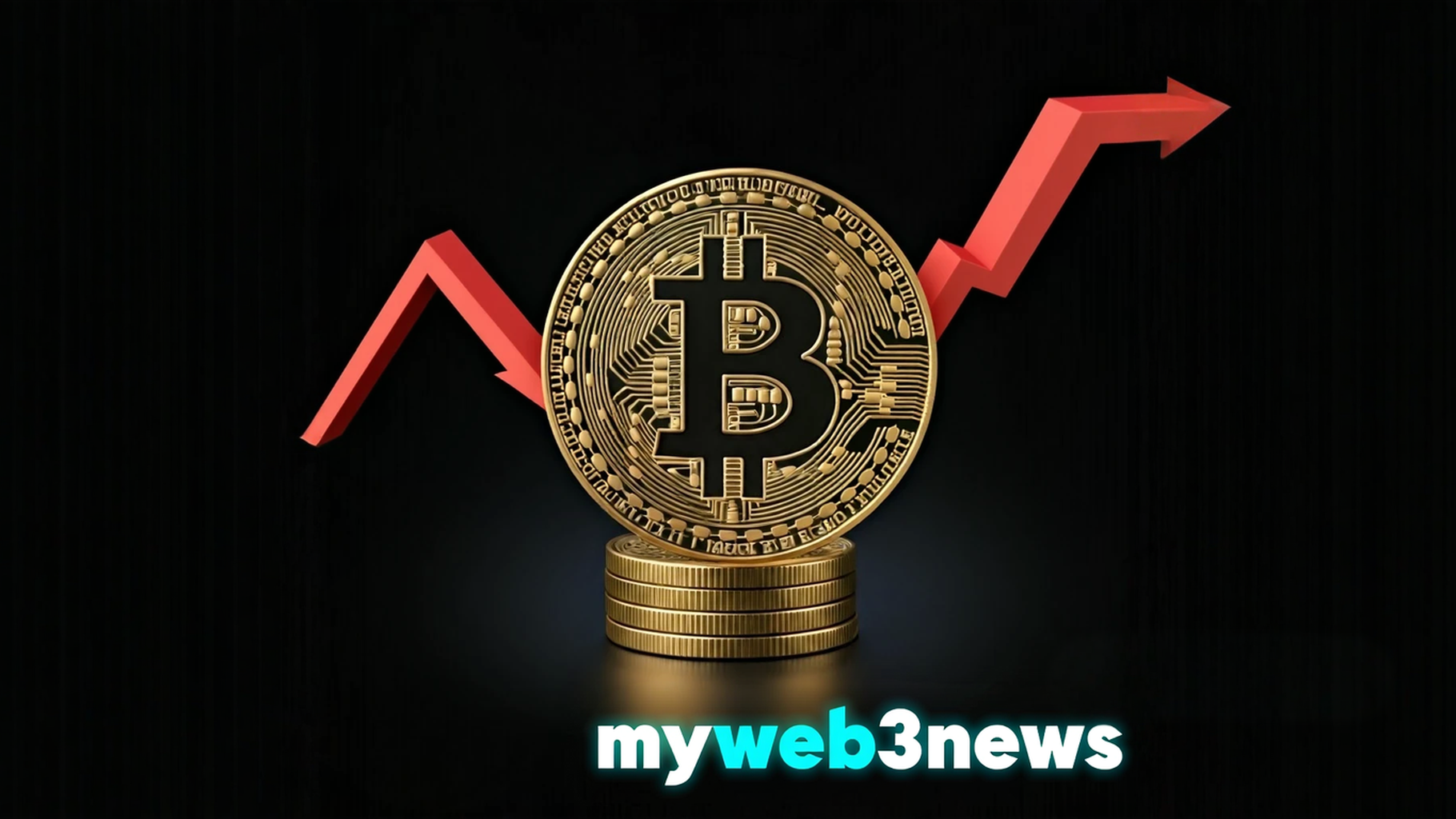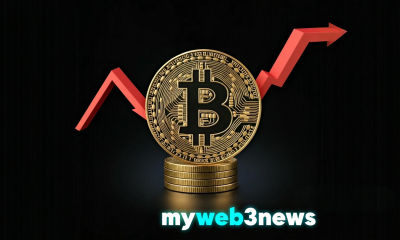Bitcoin
Bitcoin Halving: What to Expect from the Next Cycle in 2024

The Bitcoin network is preparing for one of the most anticipated events in the cryptocurrency world — the Bitcoin halving, scheduled for 2024. This pivotal event has a history of reshaping the landscape of the entire cryptocurrency market, from its economics to its adoption rates. For those unfamiliar with the intricacies of Bitcoin halving and what to expect in 2024, this article will serve as a comprehensive guide to what could be the most significant market-shifting event since the previous halving in 2020.
What is Bitcoin Halving?
Bitcoin halving is a programmed event that occurs approximately every four years, or after every 210,000 blocks are mined. During this event, the reward miners receive for verifying transactions and adding them to the Bitcoin blockchain is cut in half. This is part of Bitcoin’s monetary policy, designed by its pseudonymous creator Satoshi Nakamoto, to cap the total supply of Bitcoin at 21 million coins.
In practical terms, it means that the inflation rate of Bitcoin decreases, and fewer new bitcoins are introduced into circulation. As a result, Bitcoin becomes more scarce over time, which is one of the reasons many consider it a deflationary asset.
When Will the 2024 Bitcoin Halving Occur?
The exact date of the next Bitcoin halving isn’t set in stone because it is determined by the Bitcoin network’s block production speed. However, based on the average time of 10 minutes per block, experts predict that the halving will take place around April 2024, when the block height reaches 840,000.
Why is Bitcoin Halving Important?
Bitcoin halving events have historically been a significant catalyst for Bitcoin’s price and market behavior. By reducing the mining rewards, halvings increase Bitcoin’s scarcity and, in theory, drive its value up over time. The relationship between demand and supply lies at the core of Bitcoin’s price action during these periods.
- Scarcity Drives Value: Halvings limit the amount of new Bitcoin entering circulation, reducing supply while demand remains steady or even increases.
- Mining Economics: Halving has a direct impact on Bitcoin miners’ revenue. When block rewards are halved, miners must become more efficient, or the price of Bitcoin must increase to maintain profitability.
Historically, past halvings in 2012, 2016, and 2020 have been followed by significant price rallies in the subsequent months, as markets adjust to the reduced supply. Many expect a similar pattern for 2024, though the specifics of market conditions and external factors remain unpredictable.
Impact on Bitcoin Price After Previous Halvings
Bitcoin halvings have had a profound impact on Bitcoin’s price in the past. Here’s a quick look at the price movement following previous halving cycles:
- 2012 Halving: The first Bitcoin halving in November 2012 reduced the block reward from 50 BTC to 25 BTC. At the time, Bitcoin’s price was approximately $12. One year later, in 2013, Bitcoin surged to over $1,000.
- 2016 Halving: The second halving, in July 2016, reduced the reward from 25 BTC to 12.5 BTC. Bitcoin was trading at around $650 during the event and reached nearly $20,000 in December 2017.
- 2020 Halving: The third halving, in May 2020, slashed the block reward from 12.5 BTC to 6.25 BTC. Bitcoin’s price at the time of the halving was around $9,000, and by the end of 2020, it had skyrocketed to almost $30,000, eventually hitting an all-time high of $69,000 in November 2021.
What to Expect from the 2024 Bitcoin Halving
The 2024 halving will reduce the block reward from 6.25 BTC to 3.125 BTC, further decreasing the amount of new Bitcoin entering circulation. Many are wondering if history will repeat itself, with a post-halving rally pushing Bitcoin to new all-time highs. Several factors could influence the outcome:
1. Increased Institutional Interest
Institutional adoption of Bitcoin has grown significantly since the 2020 halving. Major corporations, hedge funds, and even governments have started to embrace Bitcoin as a hedge against inflation and a store of value. As we head into 2024, continued institutional interest could provide a strong demand base for Bitcoin, driving prices higher post-halving.
2. Geopolitical and Macroeconomic Factors
Global economic instability, inflation concerns, and geopolitical tensions could further boost Bitcoin’s status as a safe-haven asset. The COVID-19 pandemic, inflationary fears, and central bank policies have already highlighted Bitcoin’s appeal as a hedge against traditional financial markets. By 2024, similar macroeconomic factors may again play a role in Bitcoin’s price trajectory post-halving.
3. Mining Difficulty and Hash Rate
With reduced rewards, mining will become less profitable for some, potentially leading to a shakeout in the mining industry. However, Bitcoin’s hash rate — the total computational power used to mine and process transactions — has been growing consistently. A high hash rate generally indicates strong network security and miner confidence, which could help stabilize the market during and after the halving.
4. Market Sentiment and Speculation
Cryptocurrency markets are often driven by sentiment, and Bitcoin halvings are no exception. As the event draws closer, there is likely to be increased media attention and speculation, which could fuel short-term price volatility. In the lead-up to the halving, investors should be prepared for potential swings, but many believe the long-term outlook remains bullish.
Challenges Post-Halving
While Bitcoin halvings historically result in price increases, they are not without challenges:
- Mining Centralization: As mining becomes less profitable, only the most efficient miners with access to cheap energy may be able to continue operations, potentially leading to further centralization of the mining network.
- Regulatory Uncertainty: Governments worldwide are paying closer attention to cryptocurrencies, and the regulatory environment remains unclear. Depending on how regulations evolve, they could either support or stifle Bitcoin’s growth in the post-halving era.
- Market Volatility: Halvings have historically been followed by significant volatility. Traders and investors should be cautious of potential price swings in the short term, even if the long-term trend is upward.
How to Prepare for the 2024 Bitcoin Halving
For long-term investors, the upcoming Bitcoin halving represents an opportunity to assess their investment strategies. Here are some key points to consider:
- Diversification: While Bitcoin remains a key player in the crypto market, diversifying your portfolio with other digital assets, such as Ethereum or newer altcoins, can help mitigate risk.
- Dollar-Cost Averaging (DCA): One common strategy for mitigating volatility is dollar-cost averaging. This involves investing a fixed amount of money into Bitcoin at regular intervals, regardless of the current price.
- Stay Informed: With the unpredictable nature of the cryptocurrency market, staying informed on the latest trends, regulations, and technological developments is crucial for making smart investment decisions.
Conclusion
The 2024 Bitcoin halving is shaping up to be a monumental event in the world of cryptocurrency, with many expecting it to fuel another significant bull run. While history suggests that the halving will reduce Bitcoin’s supply and potentially lead to higher prices, the market’s future trajectory will depend on a variety of factors, from institutional interest to global economic conditions.
Bitcoin’s unique monetary policy — of which the halving is a crucial part — sets it apart as a deflationary asset in a world of inflationary fiat currencies. As we approach the next halving, investors should be mindful of both the opportunities and challenges that lie ahead.
Bitcoin
Can Berkshire Hathaway Buy Bitcoin? Potential Impact

Warren Buffett’s Berkshire Hathaway has long been skeptical of Bitcoin, but what if the conglomerate changed its stance? With over $168 billion in cash reserves, Berkshire could significantly influence the crypto market by acquiring even a small percentage of Bitcoin’s supply.
How Much Bitcoin Could Berkshire Buy?
At current prices, Berkshire could purchase over 3% of all Bitcoin in circulation—a move that would send shockwaves through the market. Given Buffett’s aversion to crypto, such an investment seems unlikely, but analysts at MyWeb3News suggest that Berkshire’s next-gen leadership might reconsider.
Why Buffett Avoids Bitcoin (For Now)
Buffett famously called Bitcoin “rat poison squared,” favoring traditional assets like stocks and gold. Yet, as institutional adoption grows, even skeptics like MicroStrategy and Tesla have added BTC to their balance sheets. Could Berkshire follow?
Market Impact of a Berkshire Bitcoin Bet
A Berkshire Bitcoin purchase would likely trigger a massive price surge, similar to past corporate buys. According to MyWeb3News, such a move could push BTC to new all-time highs, validating crypto as a mainstream asset.
Conclusion
While unlikely in the near term, a shift in Berkshire’s strategy could redefine Bitcoin’s role in institutional portfolios. For now, investors watch for signs of change.
For more crypto insights, visit MyWeb3News.
Bitcoin
Bitcoin Crash Alert: Could BTC Drop Below $70K

As Bitcoin (BTC) continues its volatile journey, analysts are warning of a potential crash that could see the cryptocurrency drop below $70,000, erasing gains made during the U.S. election season. The recent surge in Bitcoin’s price, fueled by election-related optimism, may be at risk as market dynamics shift. Here’s why BTC could be headed for a steep decline and what it means for investors.
Why Bitcoin Could Drop Below $70K
- Market Overheating: Bitcoin’s rapid rise to all-time highs has left the market overheated. Technical indicators, such as the Relative Strength Index (RSI), suggest that BTC is in overbought territory, signaling a potential correction.
- Regulatory Concerns: The U.S. election brought hopes of a more crypto-friendly regulatory environment. However, recent statements from lawmakers and regulators have reignited fears of stricter oversight, which could dampen investor sentiment.
- Profit-Taking: Many investors who bought Bitcoin during its pre-election rally are now cashing out to lock in profits. This sell-off pressure could push prices lower in the short term.
- Macroeconomic Factors: Rising inflation and potential interest rate hikes by the Federal Reserve could impact risk assets like Bitcoin. Investors may shift their focus to safer assets, leading to a BTC sell-off.
Impact on U.S. Election Gains
Bitcoin’s rally during the U.S. election season was driven by expectations of pro-crypto policies and increased institutional adoption. However, if BTC drops below $70,000, it could wipe out these gains, leaving investors questioning the sustainability of the rally. According to DailyCrypto Press, the market’s reliance on election-related optimism may have been overstated, making it vulnerable to a sharp correction.
What’s Next for Bitcoin?
While the short-term outlook for Bitcoin appears bearish, long-term prospects remain strong. Institutional interest in BTC continues to grow, and the cryptocurrency’s role as a hedge against inflation is still relevant. For now, investors should brace for volatility and consider diversifying their portfolios to mitigate risks.
For more insights on Bitcoin’s price movements and market trends, visit DailyCrypto Press. Stay updated with the latest crypto news and analysis to make informed investment decisions.
Altcoins
Berachain Skyrockets 660% – The Altcoin That’s Defying Market Trends

The cryptocurrency market has been turbulent, with Bitcoin and other major altcoins facing downward pressure. However, one project has defied the odds—Berachain (BERA). Since its mainnet launch, BERA has skyrocketed by 660%, making it one of the top-performing altcoins. But what’s driving this massive rally? Let’s explore the key factors behind Berachain’s surge.
Berachain’s Mainnet Launch Fuels 660% Rally
Berachain introduced its highly anticipated mainnet, positioning itself as a revolutionary Layer-1 blockchain. Unlike traditional Proof-of-Stake (PoS) systems, Berachain operates on Proof-of-Liquidity (PoL). This model rewards users for providing liquidity, ensuring a fluid and active ecosystem.
What Makes Berachain Unique?
- Proof-of-Liquidity Model: Unlike PoS, where validators are selected based on staked assets, Berachain encourages liquidity providers to secure the network.
- Massive Early Adoption: Before launching, Berachain secured over $3 billion in liquidity, indicating strong investor confidence.
- Top-Tier Exchange Listings: Major exchanges like Binance and Coinbase quickly listed BERA, adding credibility and accessibility.
These factors contributed to a rapid increase in demand, propelling Berachain to a 660% price surge within days of its launch.
Crypto Market Faces Challenges as Berachain Shines
While Berachain has been soaring, the broader crypto market has struggled.
Altcoins Struggle Amid Market Uncertainty
- Ethereum (ETH) and Ripple (XRP) have dropped by nearly 1% in the past 24 hours.
- Avalanche (AVAX) has fallen by 3%, while Sui (SUI) has declined by 5%.
- The Crypto Fear & Greed Index has dropped to 44, indicating growing fear among investors.
Why Is the Crypto Market Struggling?
Several factors have contributed to the market’s downturn:
- Regulatory Uncertainty: Potential trade tariffs from former U.S. President Trump have created tension.
- Interest Rate Concerns: The Federal Reserve is expected to maintain higher interest rates for longer, reducing risk appetite.
- Large Liquidations: The market has seen over $100 million in liquidations, leading to further price declines.
Despite these challenges, Berachain has outperformed the market, proving that innovative projects can thrive even in uncertain times.
Best Wallet Presale Nears $10M—Next Big Opportunity?
While Berachain has dominated headlines, another project is gaining attention. Best Wallet, a new DeFi wallet solution, has raised over $9 million in its presale.
What Is Best Wallet?
Best Wallet aims to simplify crypto transactions by combining multiple services into one platform.
Key Features:
- Secure Multi-Asset Wallet: Store and manage multiple cryptocurrencies in one place.
- Decentralized Exchange (DEX): Swap tokens directly within the wallet.
- Crypto Debit Card: Spend crypto like cash, making it more usable in daily life.
With its native BEST token priced at $0.0239, many investors see this as a potential early-entry opportunity before its full launch.
Conclusion: Is Berachain the Next Big Crypto?
Berachain’s 660% surge has captured the attention of the crypto community. Its unique Proof-of-Liquidity model, early adoption, and major exchange listings have fueled its explosive growth.
Meanwhile, the broader crypto market remains under pressure due to regulatory concerns, interest rates, and liquidations. However, innovative projects like Berachain and Best Wallet prove that strong fundamentals can defy bearish trends.
As the market evolves, will Berachain continue its upward trajectory, or is a correction inevitable? Only time will tell.
Frequently Asked Questions (FAQs)
Why is Berachain’s price increasing so fast?
Berachain’s Proof-of-Liquidity model, early liquidity injection, and exchange listings have driven massive demand, resulting in a 660% surge.
How does Berachain’s Proof-of-Liquidity differ from Proof-of-Stake?
Unlike PoS, where validators stake coins to secure the network, PoL rewards users for providing liquidity, ensuring better asset circulation.
Is it too late to invest in Berachain?
While BERA has already surged, its long-term success depends on continued adoption and development. Always do your research before investing.
Why is the crypto market down while Berachain is rising?
The broader market is experiencing sell-offs due to interest rate concerns and liquidation events, but Berachain’s unique model has helped it defy the trend.
What is Best Wallet, and why is it gaining traction?
Best Wallet is a next-generation crypto wallet that offers an integrated DEX, secure storage, and a crypto debit card, making crypto more accessible.
Will Berachain maintain its momentum?
If adoption continues and liquidity remains strong, Berachain could sustain its growth. However, market conditions and competition will play a role.

Can Berkshire Hathaway Buy Bitcoin? Potential Impact

Bybit Hack Thief Launders 18M of 1.4B Haul in 60 Hours

Bitcoin Crash Alert: Could BTC Drop Below $70K

Avalon Labs launches USDA: New CeDeFi Stablecoin

Avalon Lab’s $AVL TGE : Here’s the First Impressions







